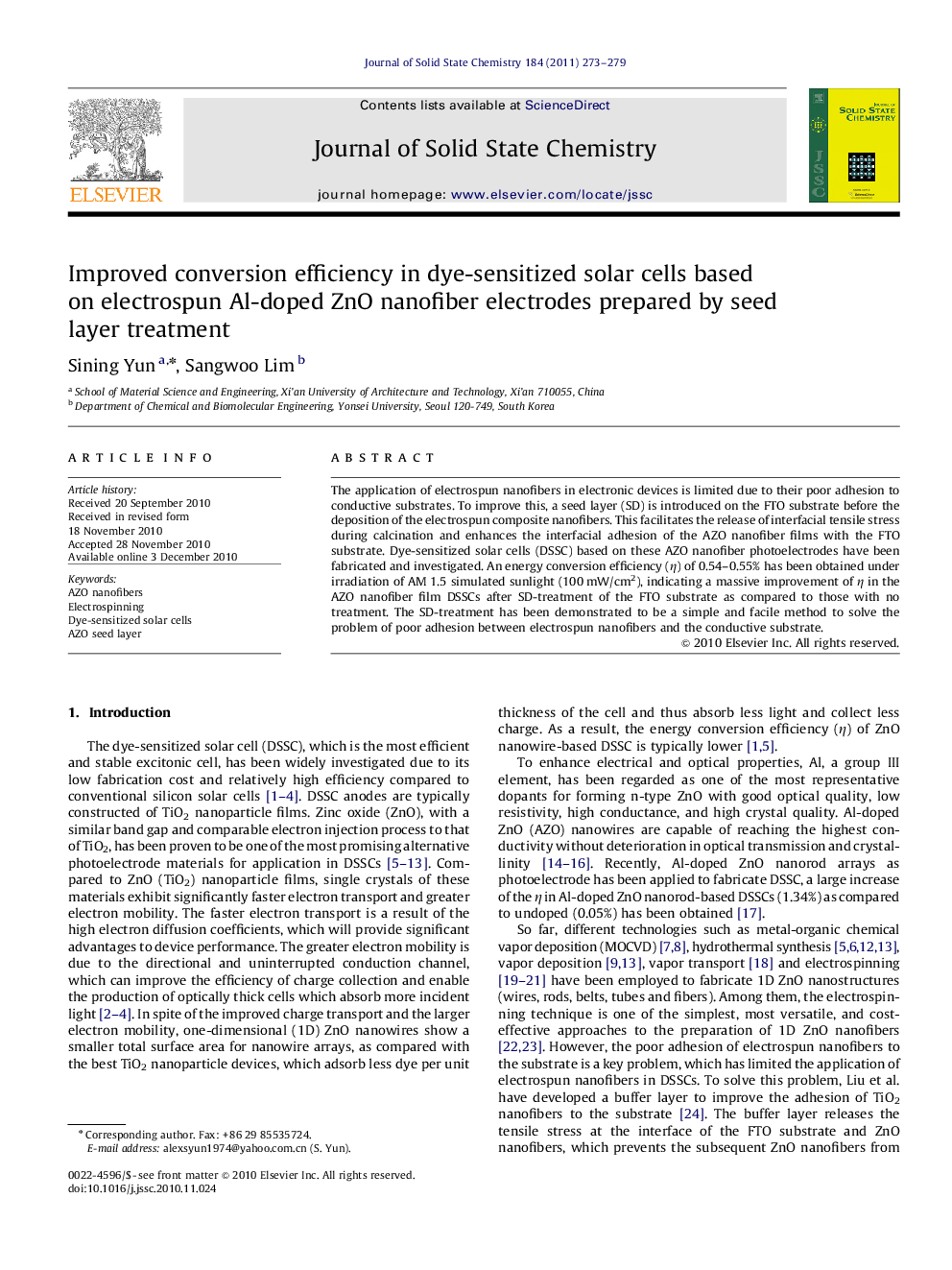| Article ID | Journal | Published Year | Pages | File Type |
|---|---|---|---|---|
| 1330998 | Journal of Solid State Chemistry | 2011 | 7 Pages |
The application of electrospun nanofibers in electronic devices is limited due to their poor adhesion to conductive substrates. To improve this, a seed layer (SD) is introduced on the FTO substrate before the deposition of the electrospun composite nanofibers. This facilitates the release of interfacial tensile stress during calcination and enhances the interfacial adhesion of the AZO nanofiber films with the FTO substrate. Dye-sensitized solar cells (DSSC) based on these AZO nanofiber photoelectrodes have been fabricated and investigated. An energy conversion efficiency (η) of 0.54–0.55% has been obtained under irradiation of AM 1.5 simulated sunlight (100 mW/cm2), indicating a massive improvement of η in the AZO nanofiber film DSSCs after SD-treatment of the FTO substrate as compared to those with no treatment. The SD-treatment has been demonstrated to be a simple and facile method to solve the problem of poor adhesion between electrospun nanofibers and the conductive substrate.
Graphical abstractThe poor adhesion between electrospun nanofibers and substrate is improved by a simple and facile seed layer (SD) treatment. The energy conversion efficiency of AZO nanofiber-based DSSCs has been greatly increased by SD-treatment of the FTO substrate.Figure optionsDownload full-size imageDownload as PowerPoint slideResearch highlights► A simple and facile method (SD-treatment) has been demonstrated. ► The poor adhesion between electrospun nanofibers and substrate is improved by the SD-treatment. ► The η of AZO nanofiber-based DSSCs has been greatly improved by SD-treatment of the FTO substrate.
